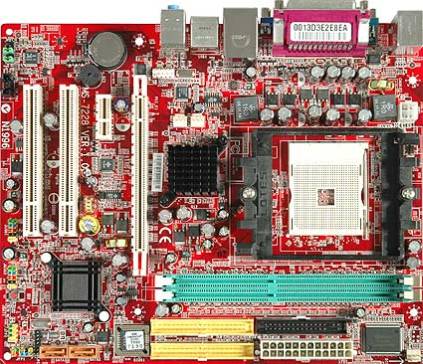Dual Core Processors For Low-Power, High-Performance Desktops
... And MSI K8NGM-V
We used another motherboard from MSI, because it was available at the time that we prepared this article. The K8NGM-V uses Nvidia's GeForce 6100 chipset with integrated graphics, and thus should be a good platform for our low power ambitions. As usual, the board can be upgraded by plugging a PCI Express graphics card into the x16 slot.
At first, we had some difficulties activating the Cool & Quiet feature. After installing the latest drivers, the system kept crashing as soon as we changed the Windows power scheme from Home/Office Desk to Portable/Laptop. A fresh Windows installation was our first attempt to solve the problem, but it did not help. Finally, upgrading the latest BIOS version (see test setup) and a CMOS reset allowed us to enable Cool & Quiet.
Using the integrated graphics, we measured a minimum power draw of 44 W when the system ran idle, which is close to the Pentium M system's 38 W. However, adding the PCI Express graphics card would raise the power requirements by as much as 35 W, while other systems were taxed by only an additional 20 W. We suppose that this is caused by the integrated graphics unit remaining active after plugging in the PCI Express card. While this may be necessary to support multi-display setups, it wastes energy in our application.
The power draw does not reach excessive levels even if the Turion 64 is kept busy. In the end, it achieves efficiency similar to the Pentium M machine, but it can be equipped with up to 4 GB of memory, versus the 915GM's 2 GB memory limit.
Get Tom's Hardware's best news and in-depth reviews, straight to your inbox.
Current page: ... And MSI K8NGM-V
Prev Page The Marathon Runner: AMD Turion 64 MT-40 Next Page MSI K8NGM-V, Continued
Patrick Schmid was the editor-in-chief for Tom's Hardware from 2005 to 2006. He wrote numerous articles on a wide range of hardware topics, including storage, CPUs, and system builds.
